| Part of the Politics series |
| Politics |
|---|
|
|

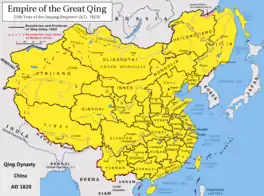
A dynasty is a sequence of rulers from the same family,[1] usually in the context of a monarchical system, but sometimes also appearing in republics. A dynasty may also be referred to as a "house", "family" or "clan", among others.
Historians periodize the histories of many states and civilizations, such as Ancient Iran (3200 – 539 BC), Ancient Egypt (3100 – 30 BC), and Ancient and Imperial China (2070 BC – AD 1912), using a framework of successive dynasties. As such, the term "dynasty" may be used to delimit the era during which a family reigned.
Before the 18th century, most dynasties throughout the world have traditionally been reckoned patrilineally, such as those that follow the Frankish Salic law. In polities where it was permitted, succession through a daughter usually established a new dynasty in her husband's family name. This has changed in all of Europe's remaining monarchies, where succession law and conventions have maintained dynastic names de jure through a female.
Dynastic politics has declined over time, owing to a decline in monarchy as a form of government, a rise in democracy, and a reduction within democracies of elected members from dynastic families.[2]
Terminology
The word "dynasty" (from the Greek: δυναστεία, dynasteía "power", "lordship", from dynástes "ruler")[3] is sometimes used informally for people who are not rulers but are, for example, members of a family with influence and power in other areas, such as a series of successive owners of a major company. It is also extended to unrelated people, such as major poets of the same school or various rosters of a single sports team.[1]
The dynastic family or lineage may be known as a "noble house",[4] which may be styled as "imperial", "royal", "princely", "ducal", "comital" or "baronial", depending upon the chief or present title borne by its members.
Dynasty
A ruler from a dynasty is sometimes referred to as a "dynast", but this term is also used to describe any member of a reigning family who retains a right to succeed to a throne. For example, King Edward VIII ceased to be a dynast of the House of Windsor following his abdication.
In historical and monarchist references to formerly reigning families, a "dynast" is a family member who would have had succession rights, were the monarchy's rules still in force. For example, after the 1914 assassinations of Archduke Franz Ferdinand of Austria and his morganatic wife, their son Maximilian, Duke of Hohenberg, was bypassed for the Austro-Hungarian throne because he was not a Habsburg dynast. Even after the abolition of the Austrian monarchy, Duke Maximilian and his descendants have not been considered the rightful pretenders by Austrian monarchists, nor have they claimed that position.
The term "dynast" is sometimes used only to refer to agnatic descendants of a realm's monarchs, and sometimes to include those who hold succession rights through cognatic royal descent. The term can therefore describe overlapping but distinct sets of people. For example, David Armstrong-Jones, 2nd Earl of Snowdon, a nephew of Queen Elizabeth II, is in the line of succession to the British crown, making him a British dynast. On the other hand, since he is not a patrilineal member of the British royal family, he is therefore not a dynast of the House of Windsor.
Comparatively, the German aristocrat Prince Ernst August of Hanover, a male-line descendant of King George III, possesses no legal British name, titles or styles (although he is entitled to reclaim the former royal dukedom of Cumberland). He was born in the line of succession to the British throne and was bound by Britain's Royal Marriages Act 1772 until it was repealed when the Succession to the Crown Act 2013 took effect on 26 March 2015.[5] Thus, he requested and obtained formal permission from Queen Elizabeth II to marry the Roman Catholic Princess Caroline of Monaco in 1999. Yet, a clause of the English Act of Settlement 1701 remained in effect at that time, stipulating that dynasts who marry Roman Catholics are considered "dead" for the purpose of succession to the British throne.[6] That exclusion, too, ceased to apply on 26 March 2015, with retroactive effect for those who had been dynasts before triggering it by marriage to a Roman Catholic.[5]
Dynastic marriage
A "dynastic marriage" is one that complies with monarchical house law restrictions, so that the descendants are eligible to inherit the throne or other royal privileges.[7] For example, the marriage of King Willem-Alexander of the Netherlands to Máxima Zorreguieta in 2002 was dynastic, making their eldest child, Princess Catharina-Amalia, the heir apparent to the Crown of the Netherlands. The marriage of his younger brother, Prince Friso of Orange-Nassau, in 2003 lacked government support and parliamentary approval. Thus, Prince Friso forfeited his place in the order of succession to the Dutch throne, and consequently lost his title as a "Prince of the Netherlands", and left his children without dynastic rights.
History
Historians periodize the histories of many states and civilizations, such as Ancient Iran (3200 – 539 BC), Ancient Egypt (3100 – 30 BC) and Ancient and Imperial China (2070 BC – AD 1912), using a framework of successive dynasties. As such, the term "dynasty" may be used to delimit the era during which a family reigned, and also to describe events, trends and artifacts of that period (e.g., "a Ming dynasty vase"). Until the 19th century, it was taken for granted that a legitimate function of a monarch was to aggrandize his dynasty: that is, to expand the wealth and power of his family members.[8]
Before the 18th century, most dynasties throughout the world have traditionally been reckoned patrilineally, such as those that follow the Frankish Salic law. In polities where it was permitted, succession through a daughter usually established a new dynasty in her husband's family name. This has changed in all of Europe's remaining monarchies, where succession law and conventions have maintained dynastic names de jure through a female. For instance, the House of Windsor is maintained through the children of Queen Elizabeth II, as it did with the monarchy of the Netherlands, whose dynasty remained the House of Orange-Nassau through three successive queens regnant. The earliest such example among major European monarchies was in the Russian Empire in the 18th century, where the name of the House of Romanov was maintained through Grand Duchess Anna Petrovna. This also happened in the case of Queen Maria II of Portugal, who married Prince Ferdinand of Saxe-Coburg and Gotha-Koháry, but whose descendants remained members of the House of Braganza, per Portuguese law; in fact, since the 1800s, the only female monarch in Europe who had children belonging to a different house was Queen Victoria and that was due to disagreements over how to choose a non German house. In Limpopo Province of South Africa, Balobedu determined descent matrilineally, while rulers have at other times adopted the name of their mother's dynasty when coming into her inheritance. Less frequently, a monarchy has alternated or been rotated, in a multi-dynastic (or polydynastic) system—that is, the most senior living members of parallel dynasties, at any point in time, constitute the line of succession.
Longevity
Dynasties lasting at least 250 years include the following. Legendary lineages that cannot be historically confirmed are not included.
| Era | Dynasty | Length of rule |
|---|---|---|
| 539 ad – present[lower-alpha 1] | Yamato | 1,484 years[lower-alpha 1] |
| 400 BCE – 1618 CE[12][13] | Pandya | 2,118 years est. |
| c. 300BCE – present day | Chola | 2316 years est. |
| c. 5th century – 1971 CE | Guhila - Sisodia | 1,371 years est. |
| 950s CE – present (title Tuʻi Tonga to 1865 CE) |
Tonga | 1,070 years est. |
| c. 780 – 1812 CE | Bagrationi | 1,032 years est. |
| c. 900 – 1930 CE | Borjigid | 1,030 years est. |
| c.730 – 1855 | Bohkti | 1,125 years est. |
| c. 1700 – 722 BCE | Adaside | 978 years est. |
| c. 891 – 1846 CE | Sayfawa | 955 years est. |
| 665 – 1598 CE | Baduspanids | 933 years |
| 57 BCE – 935 CE | Silla | 992 years est. |
| 1128 – 1971 | Kachhwaha | 843 years |
| 987 – 1792, 1814 – 1848 CE | Capetian | 839 years |
| 1046– 256 BCE | Zhou | 790 years |
| 862 – 1598 CE | Rurikid | 736 years |
| 1243 – 1971 | Rathore | 728 years |
| 37 BCE – 668 CE | Goguryeo | 705 years |
| 1270 – 1975 CE | Solomon | 705 years |
| 651 – 1349 CE | Bavand dynasty | 698 years |
| 18 BCE – 660 CE | Baekje | 678 years |
| 1360s – present | Bolkiah | 656 years or 661 years |
| 1299 – 1922 CE | Ottoman | c. 623 years |
| 543 BCE – 66 CE | Vijaya | 608 years |
| 1228 – 1826 CE | Ahom | 598 years |
| 1600 – 1046 BCE or 1766–1122 BCE | Shang | 554 years or 644 years |
| 1392 – 1910 CE | Joseon and Korean Empire | 518 years |
| 750 – 1258 CE | Abbasid | 508 years |
| 1370 – 1857 CE | Timurid | 487 years |
| 918 – 1392 CE | Goryeo | 474 years |
| 247 BCE – 224 CE | Arsacid | 471 years |
| 1154 – 1624 CE | Nabhani | 470 years |
| 202 BCE – 9 CE, 25 – 220 CE | Han and Shu Han | 448 years |
| 858 – 1301 CE | Árpád | 443 years |
| 1586 – present | Mataram[lower-alpha 2] | 437 years |
| 224 – 651 CE | Sassanian | 427 years |
| 1010 – 586 BCE | Davidic | 424 years |
| 220 – 638 CE | Jafnid | 418 years |
| 960 – 1370 CE | Piast | 410 years |
| 730 – 330 BCE | Achaemenid | 400 years |
| 1220 – 1597 CE | Siri Sanga Bo | 377 years |
| 661 – 750, 756 – 1031 CE | Umayyad | 364 years |
| 1271 – 1635 CE | Yuan and Northern Yuan | 364 years |
| 1057 – 1059, 1081 – 1185, 1204 – 1461 CE | Komnenos (styled as Megas Komnenos since late 13th century) | 363 years |
| 1428 – 1527, 1533 – 1789 CE | Later Lê (Primitive and Revival Lê) | 355 years |
| 1047 – 1375, 1387 – 1412 CE | Estridsen | 353 years |
| c. 653 BCE – 309 BCE | Argead | 344 years |
| 1278 – 1914 CE | Habsburg | 636 years |
| 1371 – 1651, 1660 – 1714 CE | Stuart | 334 years |
| 1154 – 1485 CE | Plantagenet | 330 years |
| 905 – 1234 CE | Jiménez | 329 years |
| 1699 – present | Bendahara | 324 years |
| 960 –1279 CE | Song | 319 years |
| 1613 – 1917 CE | Romanov | 304 years |
| 300 – 602 CE | Lakhmid | 302 years |
| 916 – 1218 CE | Liao and Western Liao | 302 years |
| 1616 – 1912 CE | Later Jin and Qing | 296 years |
| 1368 – 1662 CE | Ming and Southern Ming | 294 years |
| 305 – 30 BCE | Ptolemaic | 275 years |
| 618 – 690, 705 – 907 CE | Tang | 274 years |
| 909 – 1171 CE | Fatimid | 262 years |
| 1230 – 1492 CE | Nasrid | 262 years |
| 1550 – 1292 BCE | Thutmosid | 258 years |
| 1034 – 1286 CE | Dunkeld | 252 years |
Extant sovereign dynasties
There are 43 sovereign states with a monarch as head of state, of which 41 are ruled by dynasties.[lower-alpha 3] There are currently 26 sovereign dynasties.
Political families
Though in elected governments, rule does not pass automatically by inheritance, political power often accrues to generations of related individuals in the elected positions of republics, and constitutional monarchies. Eminence, influence, tradition, genetics, and nepotism may contribute to the phenomenon.
Hereditary dictatorship
Hereditary dictatorships are nominally democratic personalist dictatorships in which political power stays within a strongman's family due to the overwhelming authority of the strongman, rather than by the democratic consent of the people. The strongman typically fills government positions with their relatives. They may groom a successor during their own lifetime, or a member of their family may maneuver to take control of the dictatorship after the strongman's death.
| Dynasty | Regime | Current leader | Dynastic founder | Year founded[lower-alpha 29] |
|---|---|---|---|---|
| Kim dynasty | Kim Jong Un | Kim Il Sung | 1948 | |
| Assad dynasty | Bashar al-Assad | Hafez al-Assad | 1970 | |
| Hun dynasty[14][15][16] | Hun Manet | Hun Sen | 1997 | |
| Aliyev dynasty | Ilham Aliyev | Heydar Aliyev | 1993 | |
| Berdimuhamedow dynasty[17] | Serdar Berdimuhamedow | Gurbanguly Berdimuhamedow | 2006 |
Influential wealthy families
Gallery

 Zhao Kuangyin (Emperor Taizu of Song) was the founder of the Song dynasty in China.
Zhao Kuangyin (Emperor Taizu of Song) was the founder of the Song dynasty in China.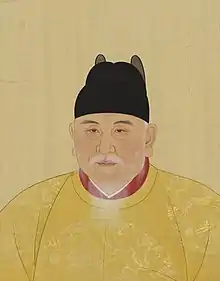 Zhu Yuanzhang (Hongwu Emperor) was the founder of the Ming dynasty in China.
Zhu Yuanzhang (Hongwu Emperor) was the founder of the Ming dynasty in China.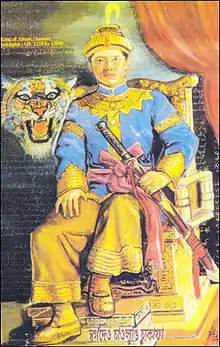 Sukaphaa was the first King of the Ahom dynasty in Assam, India.
Sukaphaa was the first King of the Ahom dynasty in Assam, India.
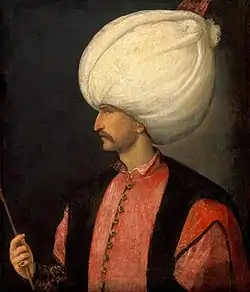 Suleiman the Magnificent, from the House of Osman, was the longest-reigning Sultan of the Ottoman Empire, ruling from 1520 until 1566.
Suleiman the Magnificent, from the House of Osman, was the longest-reigning Sultan of the Ottoman Empire, ruling from 1520 until 1566. Muhammad Ali Pasha, founder of the Muhammad Ali dynasty, ruled Egypt and Sudan from 1805 to 1848.
Muhammad Ali Pasha, founder of the Muhammad Ali dynasty, ruled Egypt and Sudan from 1805 to 1848.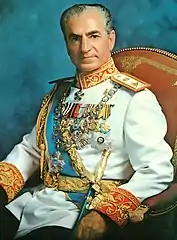 Mohammad Reza Pahlavi, from the Pahlavi dynasty, was the last Shah of Iran, before the Iranian Revolution.
Mohammad Reza Pahlavi, from the Pahlavi dynasty, was the last Shah of Iran, before the Iranian Revolution. Peter I, from the House of Romanov, was the first Russian monarch to rule as Emperor.
Peter I, from the House of Romanov, was the first Russian monarch to rule as Emperor.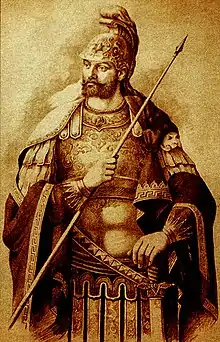 Constantine XI Palaiologos, from the Palaiologos dynasty, was the final monarch of the Byzantine Empire.
Constantine XI Palaiologos, from the Palaiologos dynasty, was the final monarch of the Byzantine Empire.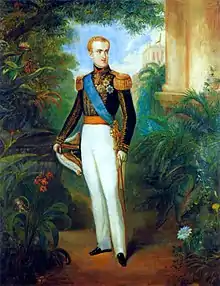 Pedro II, from the House of Braganza, ruled Brazil from 1831 to 1889.
Pedro II, from the House of Braganza, ruled Brazil from 1831 to 1889.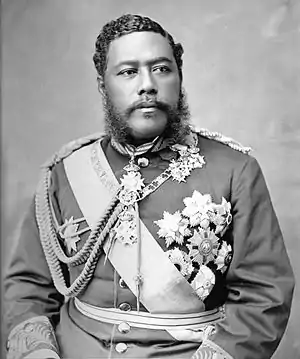 Kalākaua, founder of the House of Kalākaua, was the penultimate sovereign ruler of the Kingdom of Hawaiʻi.
Kalākaua, founder of the House of Kalākaua, was the penultimate sovereign ruler of the Kingdom of Hawaiʻi.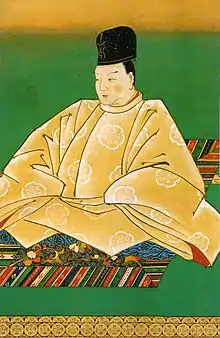 Asahito (Emperor Higashiyama), from the House of Yamato, was the 113th Japanese Emperor.
Asahito (Emperor Higashiyama), from the House of Yamato, was the 113th Japanese Emperor.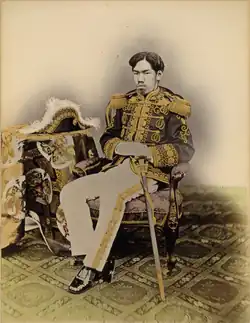 Emperor Meiji, from the House of Yamato, was the 122nd Japanese Emperor.
Emperor Meiji, from the House of Yamato, was the 122nd Japanese Emperor.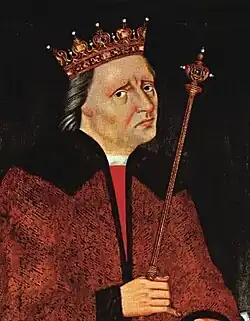 Christian I, from the House of Oldenburg, served as King of Denmark, Norway and Sweden.
Christian I, from the House of Oldenburg, served as King of Denmark, Norway and Sweden. Aisin Gioro Xuanye (Kangxi Emperor), of the Qing dynasty, was the longest reigning Emperor of China.
Aisin Gioro Xuanye (Kangxi Emperor), of the Qing dynasty, was the longest reigning Emperor of China..jpg.webp) Mohammad Shah Qajar, from the Qajar dynasty, was King of Persia.
Mohammad Shah Qajar, from the Qajar dynasty, was King of Persia. Yi Seong-gye (Taejo of Joseon) ruled Korea from 1392 to 1398, as the first King of the Joseon dynasty.
Yi Seong-gye (Taejo of Joseon) ruled Korea from 1392 to 1398, as the first King of the Joseon dynasty.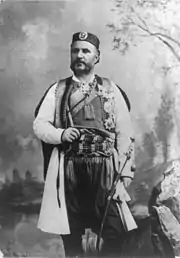 Nikola I, from the Petrović-Njegoš dynasty, ruled Montenegro from 1860 to 1918.
Nikola I, from the Petrović-Njegoš dynasty, ruled Montenegro from 1860 to 1918.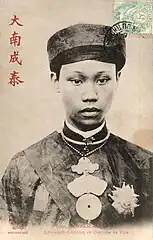 Nguyễn Phúc Bửu Lân (Emperor Thành Thái), from the Nguyễn dynasty, was Emperor of Vietnam from 1889 to 1907.
Nguyễn Phúc Bửu Lân (Emperor Thành Thái), from the Nguyễn dynasty, was Emperor of Vietnam from 1889 to 1907.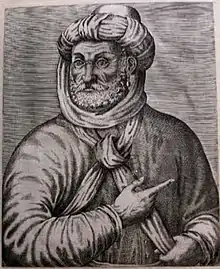 Ahmad al-Mansur, from the Saadi dynasty, was the Sultan of Morocco from 1578 to 1603.
Ahmad al-Mansur, from the Saadi dynasty, was the Sultan of Morocco from 1578 to 1603. Louis XIV, from the House of Bourbon, reigned as King of France from 1643 to 1715.
Louis XIV, from the House of Bourbon, reigned as King of France from 1643 to 1715. Napoleon I, from the House of Bonaparte, ruled over France and Italy.
Napoleon I, from the House of Bonaparte, ruled over France and Italy.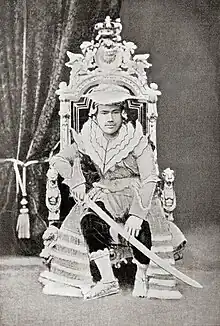 Thibaw Min was the last monarch of the Konbaung dynasty in Myanmar.
Thibaw Min was the last monarch of the Konbaung dynasty in Myanmar. Henry VIII, from the House of Tudor, reigned as King of England and Ireland from 1509 to 1547.
Henry VIII, from the House of Tudor, reigned as King of England and Ireland from 1509 to 1547. Edward VI, from the House of Tudor, reigned as King of England and Ireland from 1547 to 1553.
Edward VI, from the House of Tudor, reigned as King of England and Ireland from 1547 to 1553..jpg.webp) Elizabeth I, from the House of Tudor, reigned as Queen of England and Ireland from 1558 to 1603.
Elizabeth I, from the House of Tudor, reigned as Queen of England and Ireland from 1558 to 1603.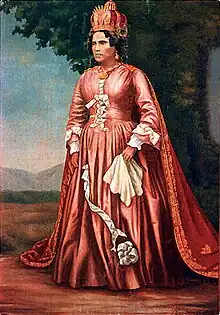 Ranavalona I, from the Hova dynasty, was Queen Regnant of Madagascar from 1828 to 1861.
Ranavalona I, from the Hova dynasty, was Queen Regnant of Madagascar from 1828 to 1861.
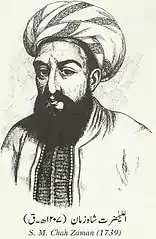 Zaman Shah Durrani, from the Durrani dynasty, ruled Afghanistan from 1793 to 1800.
Zaman Shah Durrani, from the Durrani dynasty, ruled Afghanistan from 1793 to 1800. Wanyan Aguda (Emperor Taizu of Jin) was the progenitor of the Jin dynasty in China.
Wanyan Aguda (Emperor Taizu of Jin) was the progenitor of the Jin dynasty in China. Trần Thuyên (Emperor Trần Anh Tông), from the Trần dynasty, ruled Vietnam from 1293 to 1314.
Trần Thuyên (Emperor Trần Anh Tông), from the Trần dynasty, ruled Vietnam from 1293 to 1314.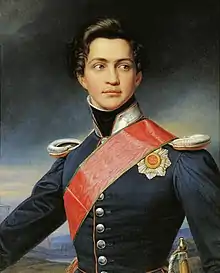 Otto I, from the House of Wittelsbach, was King of Greece from 1832 to 1862.
Otto I, from the House of Wittelsbach, was King of Greece from 1832 to 1862.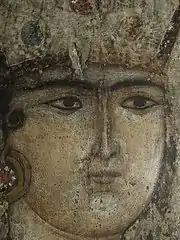 Tamar from the Bagrationi dynasty, was Queen Regnant of Georgia.
Tamar from the Bagrationi dynasty, was Queen Regnant of Georgia. Khayishan (Külüg Khan and Emperor Wuzong of Yuan) was the seventh Khagan of the Mongol Empire and the third Emperor of the Yuan dynasty in China.
Khayishan (Külüg Khan and Emperor Wuzong of Yuan) was the seventh Khagan of the Mongol Empire and the third Emperor of the Yuan dynasty in China.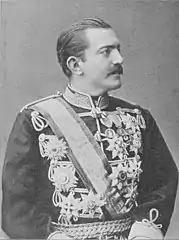 Milan I from the Obrenović dynasty, ruled Serbia from 1868 to 1889.
Milan I from the Obrenović dynasty, ruled Serbia from 1868 to 1889. Agustín I was the first and only Mexican Emperor from the House of Iturbide.
Agustín I was the first and only Mexican Emperor from the House of Iturbide. Sigismund III from the House of Vasa, was monarch of Poland, Lithuania, Sweden and Finland.
Sigismund III from the House of Vasa, was monarch of Poland, Lithuania, Sweden and Finland._-_Emperor_Leopold_I_in_coronation_armor.jpg.webp) Leopold I, from the House of Habsburg, was Emperor of the Holy Roman Empire, and King of Hungary, Croatia and Bohemia.
Leopold I, from the House of Habsburg, was Emperor of the Holy Roman Empire, and King of Hungary, Croatia and Bohemia.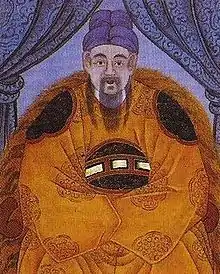
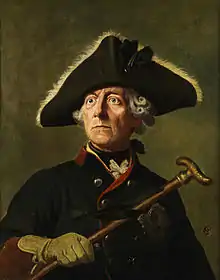
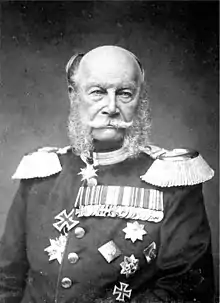 Wilhelm I, from the House of Hohenzollern, was the first German Emperor.
Wilhelm I, from the House of Hohenzollern, was the first German Emperor. Victor Emmanuel II, from the House of Savoy, was the first King of Italy.
Victor Emmanuel II, from the House of Savoy, was the first King of Italy.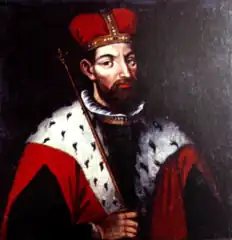
_by_Francis_Grant.jpg.webp)
See also
- Cadet branch
- Commonwealth realm
- Conquest dynasty
- Dynastic cycle
- Dynastic order
- Dynastic union
- Elective monarchy
- Family seat
- Heads of former ruling families
- Hereditary monarchy
- Iranian Intermezzo
- List of current constituent monarchs
- List of current monarchies
- List of current monarchs of sovereign states
- List of dynasties
- List of empires
- List of family trees
- List of kingdoms and royal dynasties
- List of largest empires
- List of monarchies
- List of noble houses
- Non-sovereign monarchy
- Realm
- Royal family
- Royal household
- Royal intermarriage
- Self-proclaimed monarchy
Notes
- 1 2 Traditional date (see National Foundation Day). It is impossible to determine the exact date of the Yamato dynasty's foundation, as written language in Japan did not appear until the 6th century.[9][10] The first Japanese emperor to be considered "historical" is Emperor Kinmei (r. 539–571),[11] meaning that the Yamato line is at least 537–538 years old.
- ↑ Territory split into the Surakarta Sunanate and Yogyakarta Sultanate in 1755 by the Treaty of Giyanti
- ↑ Existing sovereign entities ruled by non-dynastic monarchs include:
- ↑ The founder of a dynasty need not necessarily equate to the first monarch of a particular realm. For example, while William I was the dynastic founder of the House of Orange-Nassau which currently rules over the Kingdom of the Netherlands, he was never a monarch of the Kingdom of the Netherlands.
- ↑ Not to be confused with dynastic seat.
- ↑ The House of Windsor is descended from the House of Saxe-Coburg and Gotha, which is a branch of the House of Wettin. The dynastic name was changed from "Saxe-Coburg and Gotha" to "Windsor" in AD 1917.
- ↑ A sovereign state with Charles III as its monarch and head of state is known as a Commonwealth realm.
- ↑ George V was formerly a member of the House of Saxe-Coburg and Gotha before AD 1917.
- ↑ Including:
- ↑ The Realm of New Zealand consists of:
- ↑ Including:
 Anguilla
Anguilla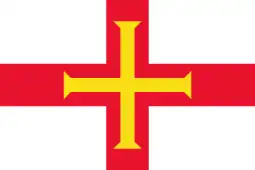 Bailiwick of Guernsey (Crown dependency)
Bailiwick of Guernsey (Crown dependency) Bailiwick of Jersey (Crown dependency)
Bailiwick of Jersey (Crown dependency) Bermuda
Bermuda British Antarctic Territory
British Antarctic Territory British Indian Ocean Territory
British Indian Ocean Territory Cayman Islands
Cayman Islands Falkland Islands
Falkland Islands Gibraltar
Gibraltar Isle of Man (Crown dependency)
Isle of Man (Crown dependency) Montserrat
Montserrat Pitcairn, Henderson, Ducie and Oeno Islands
Pitcairn, Henderson, Ducie and Oeno Islands Saint Helena, Ascension and Tristan da Cunha
Saint Helena, Ascension and Tristan da Cunha South Georgia and the South Sandwich Islands
South Georgia and the South Sandwich Islands Sovereign Base Areas of Akrotiri and Dhekelia
Sovereign Base Areas of Akrotiri and Dhekelia Turks and Caicos Islands
Turks and Caicos Islands Virgin Islands
Virgin Islands
- ↑ The House of Belgium is descended from the House of Saxe-Coburg and Gotha, which is a branch of the House of Wettin. The dynastic name was changed from "Saxe-Coburg and Gotha" to "Belgium" in AD 1920.
- ↑ Albert I was formerly a member of the House of Saxe-Coburg and Gotha before AD 1920.
- ↑ Claimed by the royal house, but the historicity is questionable.
- ↑ The House of Norodom is a branch of the Varman dynasty.
- ↑ The House of Schleswig-Holstein-Sonderburg-Glücksburg is a branch of the House of Oldenburg.
- ↑ Including:
- ↑ The Imperial House of Japan, or the Yamato dynasty, is the world's oldest continuous dynasty. The dynasty has produced an unbroken succession of Japanese monarchs since the legendary founding year of 660 BC.
- ↑ Most historians regard Emperor Jimmu to have been a mythical ruler. Emperor Ōjin, traditionally considered the 15th emperor, is the first who is generally thought to have existed, while Emperor Kinmei, the 29th emperor according to traditional historiography, is the first monarch for whom verifiable regnal dates can be assigned.
- ↑ The House of Hashim is descended from Banu Qatada, which was a branch of the House of Ali.
- ↑ The House of Luxembourg-Nassau is descended from the House of Nassau-Weilburg, which is a branch of the House of Nassau and the House of Bourbon-Parma.
- ↑ The Bendahara dynasty is the ruling dynasty of Pahang Darul Makmur and Terengganu. The Sultan of Pahang is the reigning Yang di-Pertuan Agong of Malaysia.
- ↑ The throne of Malaysia rotates among the nine constituent monarchies of Malaysia, each ruled by a dynasty. The Yang di-Pertuan Agong is elected by the Conference of Rulers.
- ↑ The House of Orange-Nassau is a branch of the House of Nassau. Additionally, Willem-Alexander is also linked to the House of Lippe through Beatrix of the Netherlands.
- ↑ The Kingdom of the Netherlands consists of:
- ↑ The House of Bourbon-Anjou is a branch of the House of Bourbon.
- ↑ The House of Nahyan is the ruling dynasty of the Emirate of Abu Dhabi. The Emir of Abu Dhabi is the incumbent President of the United Arab Emirates.
- ↑ The President of the United Arab Emirates is elected by the Federal Supreme Council. The office has been held by the Emir of Abu Dhabi since the formation of the United Arab Emirates in AD 1971.
- ↑ Year authoritarian system began
References
- 1 2 Oxford English Dictionary, 1st ed. "dynasty, n." Oxford University Press (Oxford), 1897.
- ↑ Van Coppennolle, Brenda; Smith, Daniel (2023). "Dynasties in Historical Political Economy" (PDF). The Oxford Handbook of Historical Political Economy. Archived (PDF) from the original on 20 September 2023. Retrieved 21 August 2022.
- ↑ Harper, Douglas. "dynasty". Online Etymology Dictionary.
- ↑ Oxford English Dictionary, 3rd ed. "house, n.¹ and int, 10. b." Oxford University Press (Oxford), 2011.
- 1 2 Statement by Nick Clegg MP, UK parliament website Archived 5 July 2016 at the Wayback Machine, 26 March 2015 (retrieved on same date).
- ↑ "Monaco royal taken seriously ill". BBC News. London. 8 April 2005. Archived from the original on 12 March 2010. Retrieved 27 January 2013.
- ↑ "The Dynastic Marriage". ieg-ego.eu (in German). Archived from the original on 28 February 2023. Retrieved 28 February 2023.
- ↑ Thomson, David (1961). "The Institutions of Monarchy". Europe Since Napoleon. New York: Knopf. pp. 79–80.
The basic idea of monarchy was the idea that hereditary right gave the best title to political power...The dangers of disputed succession were best avoided by hereditary succession: ruling families had a natural interest in passing on to their descendants enhanced power and prestige...Frederick the Great of Prussia, Catherine the Great of Russia, Maria Theresa of Austria, were alike infatuated with the idea of strengthening their power, centralizing government in their own hands as against local and feudal privileges, and so acquiring more absolute authority in the state. Moreover, the very dynastic rivalries and conflicts between these eighteenth-century monarchs drove them to look for ever more efficient methods of government
- ↑ Smits, Gregory J. (1991). Political Thought in Japanese Historical Writing: From Kojiki (712) to Tokushi Yoron (1712). Wilfrid Laurier University Press. pp. 30–32. ISBN 9780889209978. Archived from the original on 7 March 2023. Retrieved 7 April 2023.
- ↑ Vogel, Ezra F. (2019). China and Japan: Facing History. Harvard University Press. pp. 15–17. ISBN 9780674240766. Archived from the original on 7 March 2023. Retrieved 7 April 2023.
- ↑ Hoye, Timothy (1999). Japanese Politics: Fixed and Floating Worlds. Prentice Hall. p. 78. ISBN 9780132712897. Archived from the original on 7 April 2023. Retrieved 7 April 2023.
- ↑ Harman, William. P (1992). The sacred marriage of a Hindu goddess. Motilal Banarsidass. pp. 30–6. ISBN 978-81-208-0810-2.
- ↑ Sathayanatha Iyer (1924). History of the Nayaks of Madura. p. 58.
- ↑ "What to expect from Cambodia's new 'dynastic' prime minister". Deutsche Welle. 8 August 2022. Retrieved 25 August 2023.
- ↑ Syed, Armani (26 July 2023). "What to Know About the Army Chief Who Will Be Cambodia's Next Leader". Time. Retrieved 25 August 2023.
- ↑ Hunt, Luke (23 August 2023). "Assessing Cambodia's New Political Leadership". The Diplomat. Retrieved 25 August 2023.
- ↑ Clement, Victoria (14 March 2023). "The Aura of Governance in Turkmenistan". The Diplomat. Retrieved 27 October 2023.